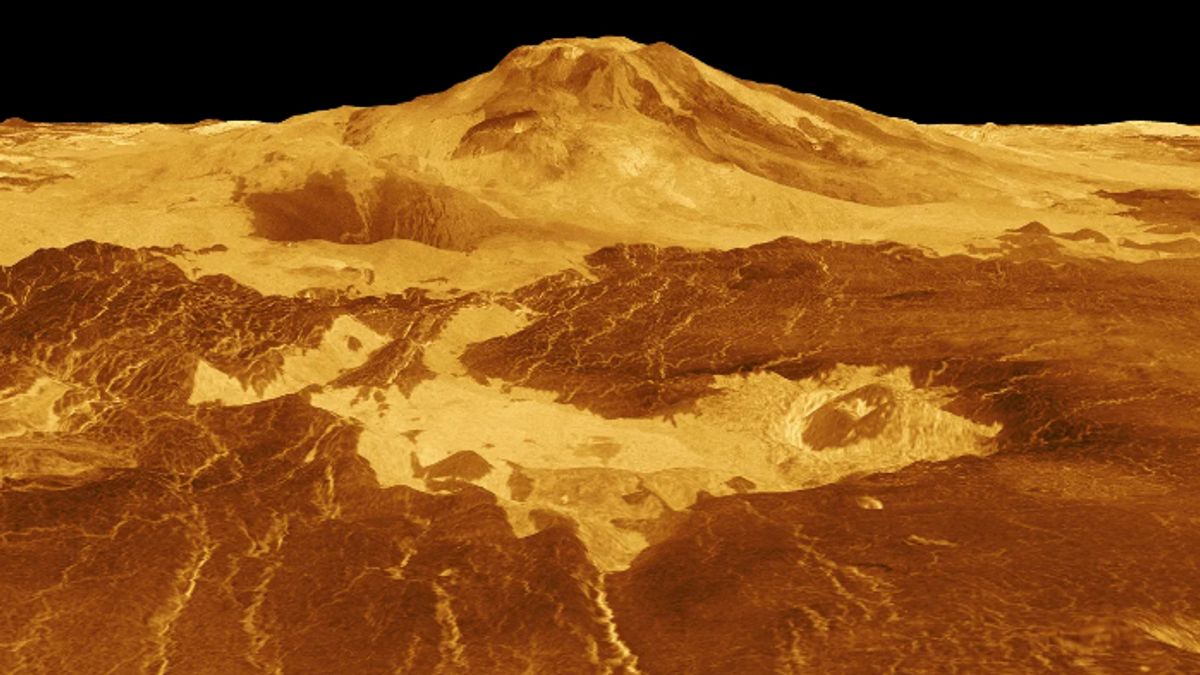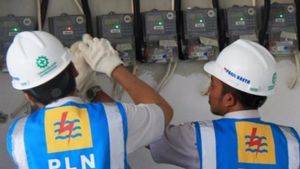JAKARTA - A recent study has shown that Venus is similar to Earth, which has active volcanoes on the planet's surface.
According to the findings, active volcanoes are still changing the planet's surface by spewing lava through holes around them.
The results of this study are based on observations of NASA's Magellan spacecraft which observed the Maat Mons volcano twice between 1990 and 1992.
However, researchers are quite careful with the data they work with. Since the data from Magellan was 30 years old, they wanted to make sure it wasn't caused by the spacecraft itself.
“Basically, looking at these images is very difficult. It's not that people aren't looking (active volcanism). People have been looking for it for years," said radar scientist Scott Hensley of NASA's Jet Propulsion Laboratory in Pasadena, California, US.
Planetary scientist Robert Herrick noticed the change after painstakingly poring over images of the region of Venus thought to be most likely to be volcanically active.
VOIR éGALEMENT:
"It's a search for a needle in a haystack with no guarantee that it's there," said researcher Herrick, of the University of Alaska Fairbanks.
Even so, the changes in the ventilation in the images alone weren't enough to convince Hensley and Herrick, where they saw evidence of active volcanism.
So Hensley ran over 100 computer simulations of what Maat Mons would look like to Magellan under different imaging conditions.
To assess this, they chose a location shown in several data sets and then moved it so they would be looking down at possibly active volcanoes on Venus.
In the 243 Earth days between each observation, the volcanic vent appears to have gone from a 2.2 square kilometer circle to a 4 square kilometer blob. The change indicates an eruption has occurred.
“None of them looked like (a 4 square kilometer blob) on the second cycle. The change has to be real," Hensley said.
They, the researchers found a volcanic vent near Maat Mons appears more circular in one image. However, in the following image created from Magellan's data, the researchers noticed the vents are more like a kidney in shape.
Additionally, the bright spot in the data appears to be new lava flows created by active volcanoes, spreading across the surface of Venus.
Venus is the same size and mass as Earth so it must have the same amount of internal heat. And that heat has to get out somehow. Researchers have long thought Venus should be volcanically active.
This is an exciting discovery published in a paper in the journal Science, and continues to provide more data for researchers to unearth, especially since in the late 2020s or early 2030s, NASA plans to launch VERITAS, a satellite that will map the entire planet from space, as well as EnVision, which will take high-resolution satellite images of the targeted area.
“The cool part is that Venus is now volcanically active. In this upcoming mission, we will see things happen," said Herrick, as quoted from SN, Tuesday, March 21.
“We already had a plan in place to try and look for new things and changes over time in both missions… we now know it's a worthwhile thing to do,” he added.
The English, Chinese, Japanese, Arabic, and French versions are automatically generated by the AI. So there may still be inaccuracies in translating, please always see Indonesian as our main language. (system supported by DigitalSiber.id)















